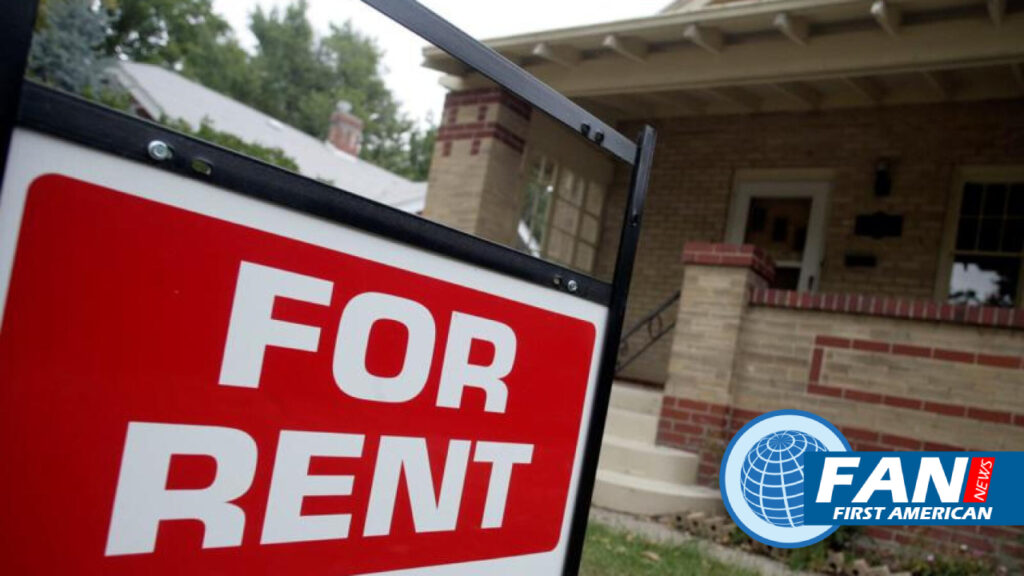Economy
Rental Market Values Have Become the Lead Consumer Price Index That Combats Inflation
Due to measurement delays, official inflation data will not show that new rents are already smoothing out.
Rising housing costs this year helped keep inflation high, but the end could be near for this source of inflation, economists say.
UBS economist Alan Detmeister said the signal comes from private sector rental rates on new leases, which tend to lead consumer price index measures in just under a year.
During June, July, and August, we saw significant rent increases, but now we are at a rate similar to what we were before the pandemic. As a result, the Fed could achieve its inflation target by 2024.
“As long as new lease inflation continues to fall, we expect housing services inflation to start falling sometime next year. In fact, a decrease in this inflation underlies most forecasts of falling inflation” these were the statements given by the president of the Federal Reserve, Jerome Powell, during a speech on November 30.

Suppose haven inflation drags headline inflation closer to 2%. In that case, this does not mean the inflation problem is over. House prices and rents are expected to rise moderately, given the slowdown in the economy and high mortgage rates. If they bounce instead, eventually, it will harbour inflation.
Wages will continue to pressure prices for other services as the labor market remains tight. The idea that the shelter itself is the driver of inflation is a bit of a stretch, said Steven Blitz, an economist at TS Lombard.
The labor department reported that wage growth rose to 5.1% in November from 4.9% in October. This factor will likely lead the Fed to maintain interest rate hikes next year.
Subscribe today and get 52 weeks of The WSJ Print Edition with daily delivery
At the start of 2021, inflation was driven by rising prices for goods, furniture, and cars, as low-interest rates, government stimulus, and the crashing economic reopening fueled strong consumer spending. With the problems in the supply chain, the invasion of Ukraine by Russia increased the prices of energy and basic products.

Over the past several months, these forces have diminished, but housing costs have increased. Housing inflation accelerated from 3.5% in October 2021 to 6.9% in 2022. In the six months ending in October, it reached an annualized rate of 8.2%, the fastest since 1982.
The Economist Epaper Digital 3-Year Subscription for $69
Real Estate Market is influential because it is the most significant component of the CPI: renters’ rent accounted for 7.4% of the CPI in September, and owner-equivalent rent (OER), which measures owner costs, accounted for 24th%. Housing’s share of core CPI, which excludes volatile energy and food prices, was an even higher 41.7%. As core inflation went from 4.6% in October 2021 to 6.3% in October 2022, housing inflation contributed around 1.4 points to the acceleration.
As reported by WSJ Renewal, haven inflation tends to be “sticky,” meaning that once it moves in any direction, it changes slowly. This has a lot to do with how it is calculated by the Department of Labor’s Bureau of Labor Statistics. OER is not based on home prices or mortgage payments because home purchases are an investment, not just a commodity. Instead, the Bureau of Labor Statistics bases the OER on what a landlord would have to pay to rent their home, taken from rents in high homeownership areas.
Most tenants’ rents change only once a year and therefore don’t respond immediately when rents for new units increase. To capture what the typical renter experiences, the CPI measure of tenant rent includes both new and existing leases and will therefore tend to lag measures of new leases only.
James Knightley, International Economist at ING, told us, “Because they are looking at the overall set of rents and not just the new rents, it is like a spinning oil tanker: it just takes time for market dynamics to catch on.”
Get 2 Years of The Wall Street Journal Print Subscription for $480
Piper Sandler economist Jake Oubina walks us through how the Bureau of Labor Statistics calculates the housing index, which looks at each group of properties at six-month intervals and then calculates the price change using a six-month moving average. . So it takes almost a year for a rent increase to show up.
Measures in new private sector leases fell months after the pandemic, as many tenants moved in with family and landlords were less likely to raise the rent. At Zillow, the rental index fell at an annual rate of 5% from March to June 2020, while the housing component of the CPI increased by 1.2% on the same basis. Then, falling unemployment, federal income support, and the reopening of the economy spurred demand for homes and rental units.
Falling unemployment, federal income support and the reopening of the economy stimulated demand for housing and rental units. Higher home prices made it harder for tenants to buy, allowing landlords to raise rents, Detmeister said. In September 2021, the Zillow Rental Index peaked at a three-month annualized rate of 25.5%, while the CPI for Housing rose 4.2%.

Get a 5-year subscription to the WSJ and Barrons News
As annouced earlier stimulus is running out, inflation eroding purchasing power, and work-from-home on the decline, rent increases are slowing. Zillow’s measure was up just 0.3% in October from September, an annualized 3.7%, slightly less than the monthly average in the three years before the pandemic. The CPI for housing rose 0.8% in the same month, or 9.4% annualized.
If the CPI only measured market rents, core inflation would already be close to 2%, Oubina said. Given the delays, the decline in market rents “heralds a significant slowdown in CPI rent measures,” she said. The Fed’s 2% target is based on the Commerce Department’s consumption expenditure (PCE) price index, which assigns half the weight to houses as the CPI. However, Mr. Oubina predicted that the current slowdown in rents is enough to bring core PCE inflation down to 2% by the second half of next year.









